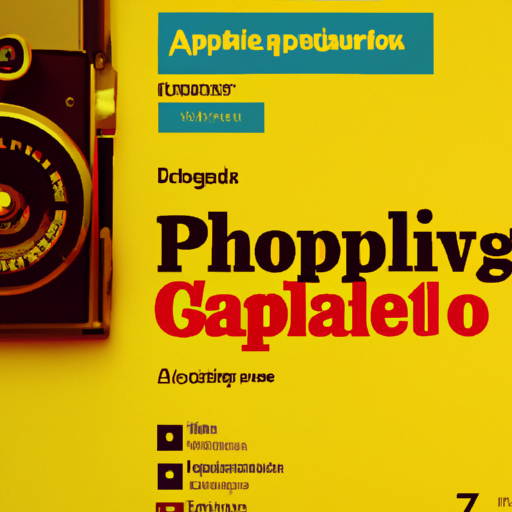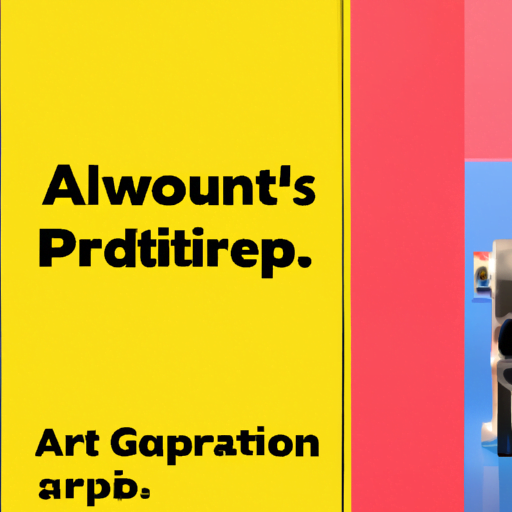
-
Table of Contents
- Typography in Advertising: Strategies for Captivating Designs
- The Importance of Typography in Advertising
- Choosing the Right Fonts
- 1. Understand the Brand
- 2. Consider Legibility
- 3. Create Contrast
- 4. Use Fonts to Evoke Emotions
- Typography Styles and Techniques
- 1. Hierarchy and Emphasis
- 2. Kerning and Tracking
- 3. Text Alignment
- 4. Use of White Space
- Case Studies: Successful Typography in Advertising
- 1. Apple
- 2. Coca-Cola
- The Impact of Typography on Consumer Behavior
- Summary
Typography in Advertising: Strategies for Captivating Designs

Typography plays a crucial role in advertising, as it has the power to captivate and engage audiences. The right choice of fonts, sizes, and styles can convey a brand’s personality, evoke emotions, and enhance the overall visual appeal of an advertisement. In this article, we will explore various strategies for creating captivating designs through effective typography in advertising.
The Importance of Typography in Advertising
Typography is more than just selecting a font; it is a powerful tool that can make or break an advertisement. Here are some reasons why typography is crucial in advertising:
- Brand Identity: Typography helps establish a brand’s identity by conveying its personality and values. Consistent use of typography across different advertisements creates brand recognition and builds trust with the audience.
- Visual Hierarchy: Typography allows advertisers to guide the viewer’s attention and create a visual hierarchy. By using different font sizes, weights, and styles, important information can be emphasized, ensuring that the message is effectively communicated.
- Emotional Impact: Typography has the power to evoke emotions and create a connection with the audience. The right choice of fonts can convey a sense of excitement, trust, or elegance, depending on the desired emotional response.
- Readability: Clear and legible typography is essential for effective communication. If the text in an advertisement is difficult to read, the message will be lost, and the impact will be diminished.
Choosing the Right Fonts
The choice of fonts is a critical aspect of typography in advertising. Here are some strategies for selecting the right fonts:
1. Understand the Brand
Before choosing fonts, it is essential to understand the brand’s personality and target audience. Is the brand modern and innovative, or traditional and reliable? Understanding these characteristics will help in selecting fonts that align with the brand’s identity.
2. Consider Legibility
Legibility is paramount in advertising. Fonts should be easy to read, even at small sizes or from a distance. Avoid overly decorative or complex fonts that may hinder readability. Sans-serif fonts like Arial or Helvetica are often a safe choice for legibility.
3. Create Contrast
Contrast in typography can create visual interest and draw attention to important information. Pairing a bold headline font with a lighter body font can create a pleasing contrast that guides the viewer’s eye through the advertisement.
4. Use Fonts to Evoke Emotions
Fonts have inherent personalities that can evoke specific emotions. For example, a bold and modern font may convey a sense of confidence and excitement, while a script font may evoke elegance and sophistication. Choose fonts that align with the desired emotional response from the audience.
Typography Styles and Techniques
In addition to font selection, various typography styles and techniques can enhance the impact of an advertisement. Here are some strategies to consider:
1. Hierarchy and Emphasis
Creating a clear hierarchy in typography helps guide the viewer’s attention and ensures that the most important information stands out. Use larger font sizes, bolder weights, or different colors to emphasize key messages or calls to action.
2. Kerning and Tracking
Kerning refers to adjusting the spacing between individual letters, while tracking refers to adjusting the overall spacing between all letters in a word or sentence. Proper kerning and tracking can improve the overall readability and visual appeal of the text.
3. Text Alignment
The alignment of text can significantly impact the overall design. Experiment with different alignments, such as left-aligned, centered, or justified, to find the most visually appealing arrangement for the advertisement.
4. Use of White Space
White space, also known as negative space, refers to the empty areas around and between elements in a design. Utilizing white space effectively can enhance the readability and visual impact of the typography. It provides breathing room for the text and allows it to stand out.
Case Studies: Successful Typography in Advertising
Let’s explore some real-world examples of advertisements that effectively utilize typography:
1. Apple
Apple is known for its minimalist and sleek design aesthetic, which is reflected in its typography choices. The company often uses the San Francisco font, a clean and modern typeface, in its advertisements. The simplicity of the font aligns with Apple’s brand identity and enhances the overall visual appeal of the advertisements.
2. Coca-Cola
Coca-Cola’s typography is instantly recognizable and has remained consistent throughout the years. The brand uses a unique script font known as “Spencerian Script,” which evokes a sense of nostalgia and tradition. The typography plays a significant role in establishing Coca-Cola’s brand identity and creating an emotional connection with its audience.
The Impact of Typography on Consumer Behavior
Typography has a direct influence on consumer behavior. Here are some statistics that highlight the importance of typography in advertising:
- According to a study by MIT, typography significantly affects the perceived credibility of information. Participants rated information presented in a more readable font as more credible.
- A study conducted by the Wichita State University revealed that typography affects the perception of a product’s value. Participants perceived products with typography that matched their expectations as more valuable.
- In a survey conducted by Adobe, 66% of respondents agreed that typography can make a brand appear more sophisticated and trustworthy.
Summary
Typography is a powerful tool in advertising that can captivate audiences, convey brand identity, and evoke emotions. By choosing the right fonts, creating visual hierarchy, and utilizing various typography techniques, advertisers can create captivating designs that effectively communicate their message. Remember to consider the brand’s personality, prioritize legibility, and use typography to create contrast and evoke the desired emotional response. With the right typography strategies, advertisements can leave a lasting impact on consumers and drive desired behaviors.
